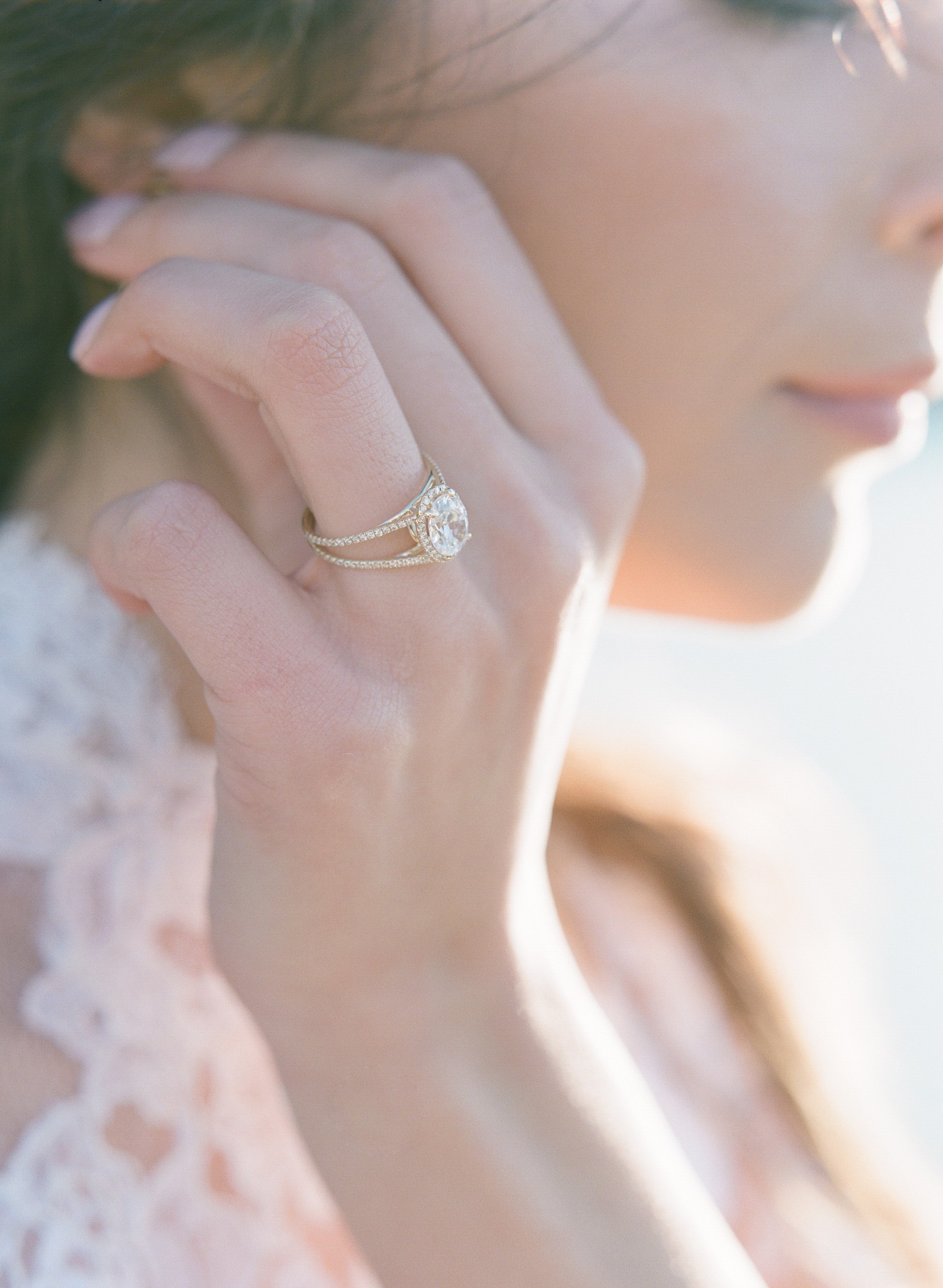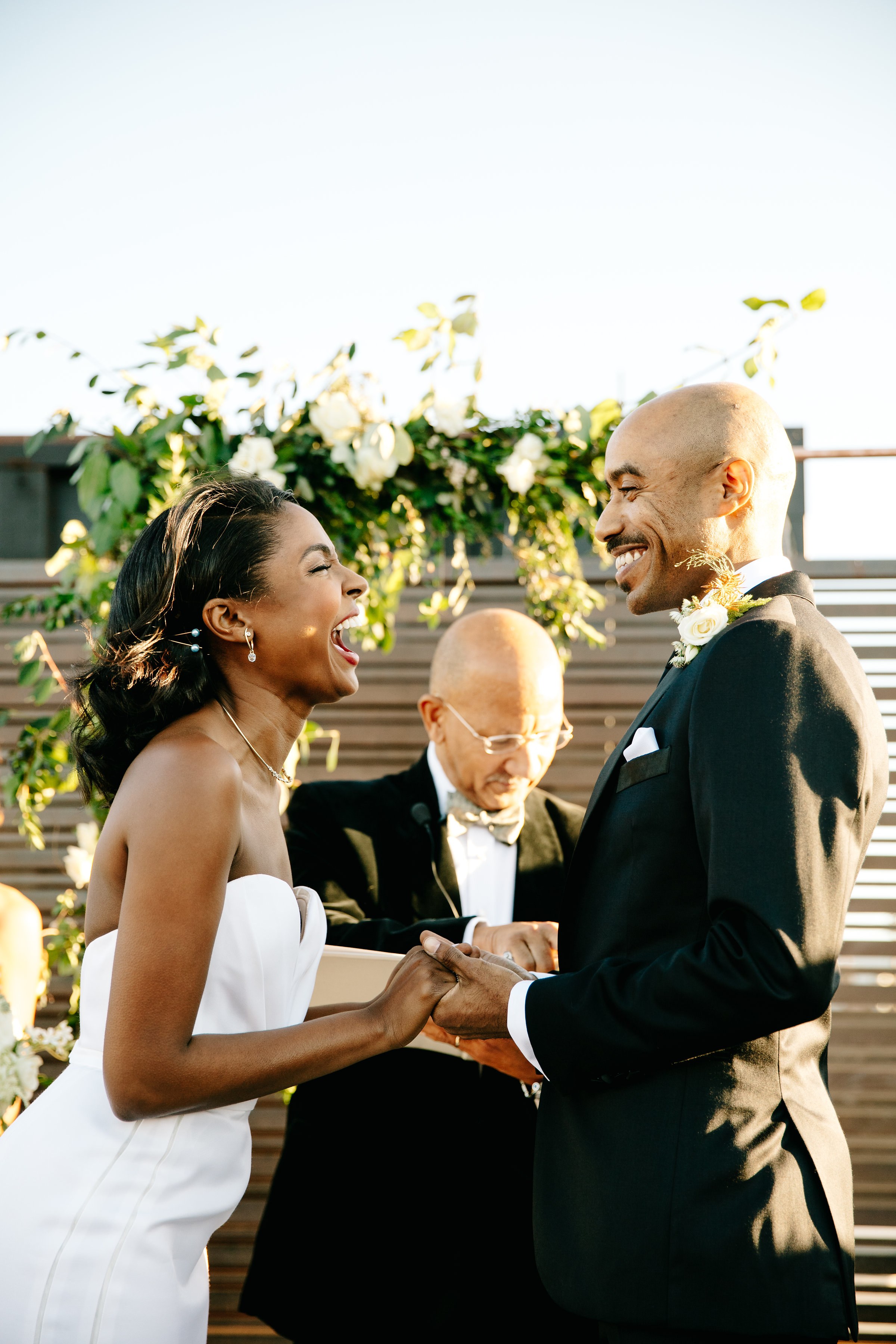From the moment you say “Yes!” chances are, you’ll be rocking a shiny new addition on your left hand. While it may be the last thing on your mind during such a happy time, with great rings come great responsibilities—including engagement ring insurance.
What happens if you lose your ring? If someone steals it? If it gets damaged? You don’t want to lose that beloved rock!
Whether you’ve left your engagement ring accidentally behind on the beach, lost a stone at the gym, or had your ring stolen, ring insurance can offer financial protection and peace of mind when you need it most. While anything happening to your engagement or wedding ring is heartbreaking, knowing it’s properly insured can help to soften the blow.
We’ve asked jewelry and insurance experts to weigh in on what it takes to make sure you’ll be able to enjoy your ring for years to come — no matter what life throws at your left hand. Read on to learn everything about how to insure wedding rings!
9 Things You Need to Know About Getting Engagement Ring Insurance
1. Get Engagement Ring Insurance As Soon as Possible
Your soon-to-be fiancé can insure the ring as soon as it is purchased and in his possession—much like you would insure a car prior to driving it off the lot. You might not initially be thinking of anything happening to your precious and sentimental token, but the sooner it’s insured, the sooner you’ll be protected. Once purchased, you or your fiancé can begin to shop for ring insurance providers.
2. Choose a Coverage Provider
When it comes to insuring your engagement ring (or other valuable jewelry for that matter) you have two options. If you have homeowners’ or renters’ insurance, you can purchase an extension (also called a “rider”) that covers your engagement ring specifically. If you don’t have homeowners’ or renters’ insurance you can take out a policy through a company that specializes in jewelry insurance like Jewelers Mutual. Independent companies like Jewelers Mutual are also worth a look if your wedding ring insurance provider doesn’t offer the specific coverage you require.
3. Understand How the Price of Engagment Ring Insurance is Determined
The cost of coverage will vary greatly based on several factors including the value of your ring, where you live (and theft rates in the area), as well as whether or not your policy has a deductible, says Kash Bulsara, a team manager in the homeowners insurance division at State Farm. “Policies without deductibles will have higher monthly premiums. And, just as with health and car insurance, it’s a great idea to ask your insurer what types of repairs contribute to your deductible.”
Estimated costs to insure rings average $1 to $2 for about every $100 your ring is worth. In theory, then, you can anticipate a premium of $100 to $200 a year.
4. Ask The Right Questions
Make sure to ask a potential policy provider important questions like:
- Can you choose who repairs your ring?
- If you’re insured for replacement (instead of a cash payout), where can you purchase a new
ring? - What happens if a suitable replacement cannot be found?
- How will you need to prove the ring vanished if you make a claim?
- Are there any circumstances that aren’t covered?
- Will you continue to be insured when out of the country?
- Are you covered for damage or just loss/theft?
- Will the policy adjust according to inflation?
As you get answers to these questions, you’ll have a better sense of which provider can offer the best ring insurance.
5. Get an Appraisal
You can’t protect the value of your ring if you don’t know what it’s worth. “A thorough appraisal will include the carat weight, cut, color, and clarity of all the diamonds, the carat weight and shape of any colored stones, the metal type and fineness or karat, as well as any identifying marks, hallmarks, or stamps,” says Elizabeth Doyle, president and co-founder of Doyle & Doyle. Most insurance companies will require an appraisal for higher value pieces (for example, rings worth $5,000 or more) while an invoice or receipt suffices for less expensive items.
6. Get a Diamond Certificate or Grading Report
If your center stone is around half a carat or larger, your jeweler will often provide a diamond certificate or grading report from an independent gemological laboratory like the Gemological Institute of America (GIA), the organization that founded the “4Cs” used to evaluate diamonds: color, cut, clarity, and carat weight. This assessment of quality — while not an appraisal — lists all of the measurements your appraiser will need to make the most accurate determination of value. (This detailed information can also help track down your specific diamond if it’s ever stolen.) “If your ring is lost and you’re without an appraisal there is no way you’ll be able to recover the ring’s actual worth,” says Russell Shor, senior industry analyst at GIA. “The GIA report is unassailable if people lose their ring or are victims of theft.”
7. Make Sure Your Appraiser Has the Right Credentials
Find a reputable appraiser with sparkling reviews, preferably one who also holds a graduate degree in gemology and is a member of a national appraisal society. (The GIA recognizes these associations.) “It’s very important that your appraisal is accurate,” says Zaven Ghanimian, designer for Simon G. Jewelry. “It’s not a good thing if the appraiser inflates the value of your ring.” Sure, you might be thrilled when the sparkler that cost your groom $2,000 appraises for double, but you could end up losing money in the long run. You’ll pay a higher monthly premium for a ring that appraises for $4,000.
8. Remember to a Reappraise
The good news is your engagement ring was a smart investment! As its value has likely gone up since it was purchased, it’s important to have your ring reappraised every two to three years for insurance purposes. And consider going back to the same appraiser each time (assuming you had a good experience), says Bulsara. Most reputable appraisers will retain a copy of your original appraisal and can work from that instead of starting from scratch — and that cuts costs. (But bring a copy of your appraisal in the event they don’t keep records for that long.)
9. Reevaluate Your Overall Insurance Needs
There just might be more to think about than just how to insure engagement rings — there just might be more new items you need to insure that you need to insure. “In addition to engagement ring insurance, remember this is a time when you should be reevaluating all of your insurance needs as newlyweds,” says Jeanne Salvatore, senior vice president of public affairs and consumer spokesperson for the Insurance Information Institute. Even consider ramping up your insurance coverage to account for expensive or hard-to-replace wedding gifts.
Browse hundreds of engagement rings here.
See more:
The 5 Times You Should Take Off Your Engagement Ring
91 Engagement Ring Selfies We Love
17 Simple Engagement Rings for the Minimalist Bride-to-Be
SOURCE:http://www.brides.com/story/how-to-insure-your-engagement-ring



